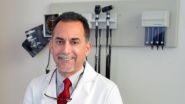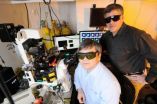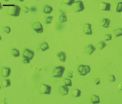(Press-News.org) AUGUSTA, Ga. – When people lose hope that they will ever get another good night's sleep, they become at high risk for suicide, researchers report.
Insomnia and nightmares, which are often confused and may go hand-in-hand, are known risk factors for suicide but just how they contribute was unknown, said Dr. W. Vaughn McCall, Chair of the Medical College of Georgia Department of Psychiatry and Health Behavior at Georgia Regents University.
The new study reaffirms that link and adds the element of hopelessness about sleep that is independent of other types of hopelessness, such as those regarding personal relationships and careers, said McCall, corresponding author of the study in Journal of Clinical Sleep Medicine, the journal of the American Academy of Sleep Medicine.
"It turns out insomnia can lead to a very specific type of hopelessness and hopelessness by itself is a powerful predictor of suicide," he said. "It's fascinating because what it tells you is we have discovered a new predictor for suicidal thinking."
If the findings hold true in larger studies, they wave a red flag about suicide risk and point toward prevention that targets the negative thoughts with pharmaceuticals and psychological intervention.
The finding also is a reminder to physicians that depressed patients who report increased sleep problems should be asked if they are having suicidal thoughts, McCall said.
The scientists used psychometric testing to objectively assess the mental state of 50 depressed patients age 20-80 being treated as an inpatient, outpatient or in the Emergency Department. More than half had attempted suicide and most were taking an anti-depressant. Testing enabled the researchers to filter out other suicide risks such as depression itself and hone in on the relationship between insomnia and suicide risk, asking specific questions about dysfunctional beliefs about sleep such as: Do you think you will ever sleep again?
"It was this dysfunctional thinking, all these negative thoughts about sleep that was the mediating factor that explained why insomnia was linked to suicide," said McCall, who specializes in depression and sleep disorders.
He's seen insomnia patients spiral downward with increasingly negative and unrealistic thoughts about not sleeping, thinking, for example, that their immune system is being irrevocably damaged. McCall challenges such negatives from his patients and asks other doctors to consider doing the same: to disagree, strongly stating there is no scientific evidence for the thoughts but there is hope and help. "People have choices," he said.
Once insomnia has been diagnosed, some fairly rigid guidelines can help turn the exhausting and potentially deadly tide, including:
Wake up at the same time every day no matter when you go to bed
Not going to bed until you are sleepy
Eliminating caffeine, known to stay in your system up to 15 hours
Eliminating alcoholic beverages or tobacco products
Complete cardiovascular exercise at least four hours before bedtime
Allowing ample time to digest a meal before heading to bed.
The likelihood of being suicidal at least doubles with insomnia as a symptom, McCall noted.
"If you talk with depressed people, they really feel like they have failed at so many things. It goes something like, 'My marriage is a mess, I hate my job, I can't communicate with my kids, I can't even sleep.' There is a sense of failure and hopelessness that now runs from top to bottom and this is one more thing," McCall said.
INFORMATION:
Collaborators include scientists at Wake Forest University School of Medicine in North Carolina and the University of Louisville in Kentucky.
Losing hope of a good night's sleep is risk factor for suicide
2013-02-15
ELSE PRESS RELEASES FROM THIS DATE:
Climate scientist Schellnhuber to brief UN Security Council
2013-02-15
It will take place on February 15th at the UN headquarters in New York City. Secretary-General Ban Ki-moon plans to attend.
"With unabated greenhouse-gas emissions, humankind would venture into an uncertain future that is much hotter than ever before in its history – so from a scientist's perspective, climate change is a global risk multiplier," says Schellnhuber, director of PIK and chair of the Scientific Advisory Council on Global Change (WBGU) for the German government. Many millions of people could be affected by severe climate change impacts. They range from sea-level ...
Math helps detect gang-related crime and better allocate police resources
2013-02-15
Philadelphia, PA—Social groups in a population can lend important cues to law enforcement officials, consumer-based services and risk assessors. Social and geographical patterns that provide information about such communities or gangs have been a popular subject for mathematical modeling.
In a paper published last month in the SIAM Journal on Applied Mathematics, authors use police department records about individuals' social and geographical information to determine gang memberships.
Data on social interactions is particularly hard to come by, but in combination ...
Yale study links common chemicals to osteoarthritis
2013-02-15
New Haven, Conn. – A new study has linked exposure to two common perfluorinated chemicals (PFCs) with osteoarthritis. PFCs are used in more than 200 industrial processes and consumer products including certain stain- and water-resistant fabrics, grease-proof paper food containers, personal care products, and other items. Because of their persistence, PFCs have become ubiquitous contaminants of humans and wildlife. The study, published in Environmental Health Perspectives, is the first to look at the associations between perfluorooctanoic acid (PFOA) and perfluorooctanesulfonic ...
Why cells stick: Phenomenon extends longevity of bonds between cells
2013-02-15
Research carried out by scientists at the Georgia Institute of Technology and The University of Manchester has revealed new insights into how cells stick to each other and to other bodily structures, an essential function in the formation of tissue structures and organs. It's thought that abnormalities in their ability to do so play an important role in a broad range of disorders, including cardiovascular disease and cancer.
The study's findings are outlined in the journal Molecular Cell and describe a surprising new aspect of cell adhesion involving the family of cell ...
Researchers invent 'acoustic-assisted' magnetic information storage
2013-02-15
CORVALLIS, Ore. – Electrical engineers at Oregon State University have discovered a way to use high- frequency sound waves to enhance the magnetic storage of data, offering a new approach to improve the data storage capabilities of a multitude of electronic devices around the world.
The technology, called acoustic-assisted magnetic recording, has been presented at a professional conference, and a patent application was filed this week.
Magnetic storage of data is one of the most inexpensive and widespread technologies known, found in everything from computer hard drives ...
Leading RSV researcher publishes work at Le Bonheur Children's
2013-02-15
Memphis, Tenn. – Studies at Le Bonheur Children's Hospital in Memphis, Tenn., are advancing our understanding of how viruses, including RSV, replicate in humans, mutate to avoid the immune response and can be effectively treated.
John DeVincenzo, MD, medical director of Molecular Diagnostics and Virology Laboratories at Le Bonheur, and professor of Pediatrics and Microbiology, Immunology, and Molecular Biology at The University of Tennessee Health Science Center, has recently published three papers on this topic. DeVincenzo's lab is one of only two of its kind in the ...
Revealing the secrets of motility in archaea
2013-02-15
The protein structure of the motor that propels archaea has been characterized for the first time by a team of scientists from the U.S. Department of Energy's Lawrence Berkeley National Laboratory (Berkeley Lab) and Germany's Max Planck Institute (MPI) for Terrestrial Microbiology.
The motility structure of this third domain of life has long been called a flagellum, a whip-like filament that, like the well-studied bacterial flagellum, rotates like a propeller. But although the archaeal structure has a similar function, it is so profoundly different in structure, genetics, ...
APS applauds President Obama's support of R&D in SOTU
2013-02-15
WASHINGTON, D.C. – The American Physical Society (APS), the nation's largest organization of physicists, commends President Obama's exhortation in his State of the Union Speech that, "Now is the time to reach a level of research and development not seen since the height of the Space Race."
During the Space Race, the nation made huge investments in scientific research, which led to new discoveries, accelerated technological advancements and generated new innovations and businesses.
The President also noted that sequestration -- automatic spending cuts scheduled to occur ...
A dual look at photosystem II using the world's most powerful X-ray laser
2013-02-15
From providing living cells with energy, to nitrogen fixation, to the splitting of water molecules, the catalytic activities of metalloenzymes – proteins that contain a metal ion – are vital to life on Earth. A better understanding of the chemistry behind these catalytic activities could pave the way for exciting new technologies, most prominently artificial photosynthesis systems that would provide clean, green and renewable energy. Now, researchers with the U.S. Department of Energy (DOE)'s Lawrence Berkeley National Laboratory (Berkeley Lab) and the SLAC National Accelerator ...
Noncoding RNAs offer huge therapeutic and diagnostic potential
2013-02-15
New Rochelle, NY, February 14, 2013—As scientists continue to unravel the complexity of the human genome and to uncover vital elements that play a role in both normal physiology and disease, one particular class of elements called noncoding RNAs is gaining a lot of attention. Guest Editor Tom Cech, PhD and Executive Editor Fintan Steele, PhD explore the enormous potential value of this rapidly advancing research area in their Editorial " The (Noncoding) RNA World." The authors introduce a special research section on noncoding RNAs published in the current issue of Nucleic ...




